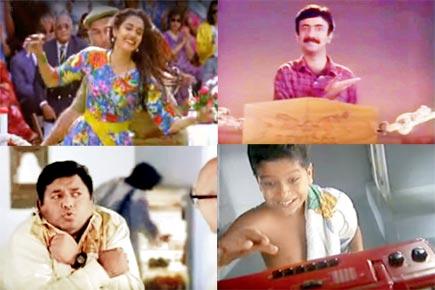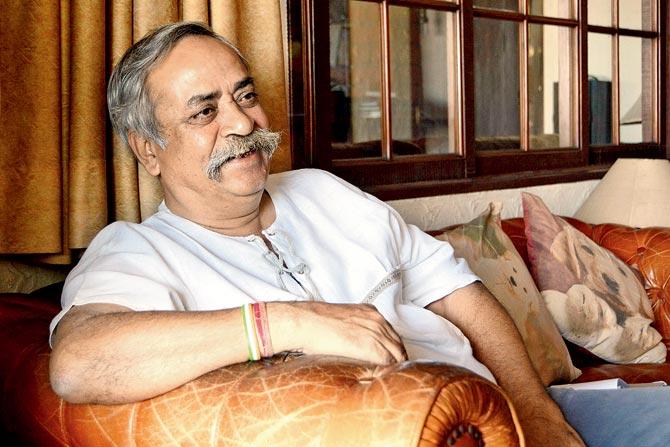Adman Piyush Pandey revisits iconic campaigns from the decade that transformed brand communication and set the ball rolling for a phenomenon that continues to define the advertising landscape of India

A still from the Cadbury Dairy Milk ad series that was named Campaign of the Century by the Abbys; stills from Fevicol (featuring Rajkumar Hirani), Kelvinator, and Le Sancy commercials
If the 1990s produced some memorable television shows, the commercials they came interspersed with were forces to reckon with in their own right. Created with an Indian sensibility that celebrated human relations, they were a departure from what one might call the English language-oriented thought process that had dominated the advertising industry before this decade. Rooted in desi sights, smells and sounds, these new commercials presented products in a witty, relatable manner, building brand recall, which, two decades later has evolved into a significant part of nostalgia associated with the '90s.
Piyush Pandey played a significant role in shaping some of the most defining ad campaigns of the '90s, and irreversibly changed the advertising landscape of the country in the process. Executive chairman and creative director, South Asia, at Ogilvy & Mather India -- his workplace since he first entered the industry 35 years ago -- Pandey became the first Indian to win the Padma Shri in the advertising and communication category last year.
Our wish to revisit the ad guru's earliest creations is granted when he answers the landline at his home. As we reach his sea-facing Shivaji Park apartment the next day, we find Pandey seated in his tastefully done office, ready for the appointment. As promised, he takes us on a trip down memory lane, sounding hopeful about the future of advertising in India.

Edited excerpts from the interview:
What was the industry like when you took your first steps in advertising?
Every decade has its highs, and with every decade, the world moves on. The '70s and '80s produced some very good work in print advertising, and also some noteworthy work in cinema and radio. The practice, however, was of writing stuff in English and translating it. My coming to the industry in 1982 coincided with the Asian Games in New Delhi, and that was also the time when the colour TV entered Indian homes in a big way, which democratised advertising.
How did the shift happen?
With liberalisation and satellite TV coming to share the space that was once solely occupied by Doordarshan, the '90s demanded that you think in the language of the people; you think India and its cultures. You think about touching, not telling, people. The desi sensibility had existed earlier too -- let's not forget that it was in the second half of '80s when Mile Sur Mera Tumhara and Hamara Bajaj happened -- but the opportunity to showcase it came in the '90s.
Did this shift require a conscious rethinking?
I didn't need a rethink because I always believed that India must have advertising that touches and persuades Indians. My formative years in Jaipur and later, my cricket-related travelling gave me the opportunity to see, feel and respect India. So, I was not there as a crusader, I was just playing the game as I knew it. But people liked the game, and others joined in.
Did you meet with resistance initially?
The industry took some time to change itself, but I was fortunate that the senior most minds at Ogilvy were quick to realise this and they encouraged me to do more of what I was doing. In 1987, Mani Iyer (managing director) and Suresh Malik (national creative director) decided this was the future. They asked me to leave my client-servicing role and become Copy Chief Indian Languages -- an unheard of move in the industry. The kind of people we began to attract, not only from Bombay and Delhi, started bringing in a change. And this change in approach gradually took place across the board, not just in Ogilvy. The '90s became a landmark for reaching people in an Indian fashion, in a meaningful way.
What are some of your favourite campaigns from the '90s?
(Gives it a good thought) We so brutally dominated the '90s that I might have to pick some of our own campaigns -- Cadbury, Le Sancy soap (Rahul paani chala jayega!), Fevicol, Asian Paints and Kelvinator to name a few.
How did these campaigns strike a chord with the viewers?
I approached an ad campaign by starting with the audience, not the client. I asked myself: what is fresh about what I am doing? Will it delight the viewer? Will my family, friends and neighbours want to see it again?
Do lessons from then still define contemporary advertising?
What the '90s did, and this century has continued, is to embrace fresh talent, and believe that the telling is not as important as the receiving. Youngsters today are doing some great work. They keep surprising you and blowing your mind away. Very often, I come across work and wish I had written it.
Has social media impacted the approach to advertising?
Social media should not affect advertising. It should be embraced as another platform to do exciting stuff. When you get on to social media, you will look at thousands of things, but the most creative thing is what you'll forward to friends.
People often come and ask me, 'Can you make a viral film?' That's crazy! An ad goes viral if it's good, I can't plan a viral.
 Subscribe today by clicking the link and stay updated with the latest news!" Click here!
Subscribe today by clicking the link and stay updated with the latest news!" Click here!










